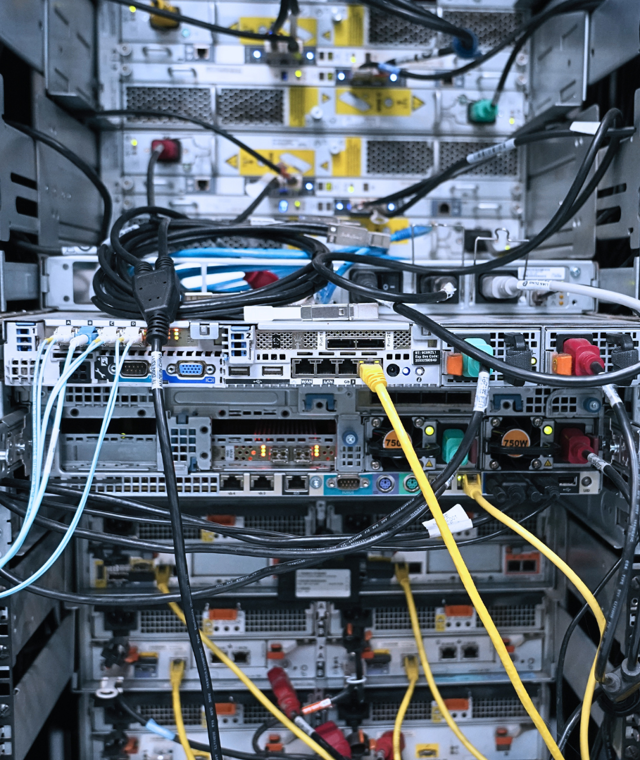EOL is the end of production, and the final step. EOSL is the end of support and maintenance, and the stage of discontinuing the service.

What is the Difference between EOL and EOSL?
In the world of technology where innovation is key, businesses must be well-informed to make strategic decisions about their IT setup. This involves understanding the difference between End of Life (EOL) and End of Service Life (EOSL). Even though these terms can be confusing, they play a crucial role in managing data center hardware. Let us explore the distinctions between these concepts to understand their significance and implications for businesses.
Defining the Terms of EOL and EOSL
End of Life (EOL)
EOL implies the point in a hardware's lifecycle when the manufacturer discontinues its production and support. This means that the product is no longer being manufactured, and the vendor stops providing operating system updates or official support.
End of Service Life (EOSL)
EOSL is a subsequent phase in the product's lifecycle, marking the termination of official vendor support. This means that even if a product is still operational, the manufacturer will no longer provide assistance, updates, or patches. Companies then must rely on in-house expertise or third-party services for maintenance and support. In this stage, companies often face the dilemma of whether to extend the life of their assets or invest in newer technologies.

Related Challenges
1. Security Concerns
- EOL: When a product reaches EOL, security updates and patches are no longer provided by the manufacturer. This means that any vulnerabilities discovered after the EOL date will not be addressed, leaving the systems unprotected against potential security threats.
- EOSL: Similar to EOL, reaching EOSL leaves systems vulnerable to security threats, as there is no longer any active support to address potential vulnerabilities to provide assistance in case of problems.
2. Operational Efficiency
- EOL: Once hardware reaches EOL, the system performance and operational efficiency may decline due to incompatibility with newer technologies and a lack of support.
- EOSL: The impact on operational efficiency is more evident during EOSL, as organizations must rely on alternative support, such as third-party maintenance providers, to address issues and ensure continued functionality.
3. Strategic Planning
- EOL: Organizations need to proactively plan for EOL events to avoid sudden disruptions to their operations. This involves evaluating the current IT infrastructure, identifying EOL products, and developing a strategy for migration or replacement.
- EOSL: Strategic planning is crucial during EOSL, as decisions must be made regarding whether to extend the life of existing assets through third-party support or invest in newer technologies. A comprehensive cost-benefit analysis is essential to make informed decisions aligned with organizational goals.
Mitigating Risks and Embracing Opportunities
To deal with the challenges of EOL and EOSL, organizations need to take a proactive and strategic approach to manage their IT assets. Here are some key considerations:
1. Regular Assessment
- Regularly evaluate the IT infrastructure to identify products approaching EOL or EOSL. Keep a detailed inventory including where each one is in its lifecycle. This helps you stay on top of things and plan for replacements or updates when needed.
2. Strategic Planning
- Prepare a strategic plan for managing EOL and EOSL events, considering factors such as budget, business goals, and technological advancements.
3. Engage with Third-Party Support
- Consider engaging with a trustworthy third-party maintenance provider to extend the life of assets during EOSL.
4. Invest in Future-Proof Technologies
- Strategically invest in technologies that are less likely to face premature obsolescence, reducing the frequency of EOL and EOSL challenges.
5. Collaborate with Vendors
- Establish open communication channels with vendors to stay informed about product lifecycles, updates, and support timelines. Negotiate favorable service agreements and explore options for extended support when needed.

Conclusion
Navigating the IT lifecycle involves understanding the differences between EOL and EOSL. By actively managing these stages, organizations can lower risks, increase security, and position themselves for continued success in the ever-changing landscape of technology. Strategic planning, regular assessments, and a readiness to embrace new opportunities are essential elements of a strong IT lifecycle management strategy.
Difficult to Find Your Own EOSL Dates?
Finding the date when your data center hardware is no longer supported by the OEMs can be difficult.
Subscribe to our EOSL Newsletter and receive information on upcoming EOSL dates on all major brands!
Furthermore, do not miss the chance to download our free EOSL guide and get transparency on all major brands and models that either go or have gone End of Service Life (EOSL).






